Designing a child’s room is more than just choosing furniture and décor — it’s about creating an environment that nurtures creativity, calmness, and emotional well-being.
One of the most effective ways to achieve this is by introducing pastel colours. These soft, light hues are not just visually appealing; they carry powerful psychological benefits that help children feel relaxed, happy, and focused. Whether you’re planning a full makeover or just refreshing a few corners, harnessing the power of pastels can completely transform your child’s space into a soothing haven they’ll love spending time in.
Why Pastels Are Perfect for Children’s Rooms
Pastel colours — such as soft pinks, mint greens, sky blues, and buttery yellows — have become a rising trend in interior design, especially for kids’ rooms.
- These shades have immense popularity not just because of the appeal it brings.
- Pastels are known for their calming effects, helping to balance energy levels and reduce overstimulation, something that’s crucial for young minds constantly buzzing with activity.
- Pastels are more than just a passing trend; they are a thoughtful design tool. They create an emotional buffer that helps children manage overstimulation, subtly guiding them toward better habits.
- Ultimately, using pastels in a child’s room is about nurturing their growth.
- This means that by choosing pastel shades, you’re not just decorating — you’re designing a space that supports emotional health, focus, and a sense of belonging.
The Psychology Behind Pastel Colours
Light colours like powder blue, lavender, peach, and mint have a natural ability to relax the mind. They mimic the tones of nature — clear skies, blooming flowers, and soft seas — all of which promote peace and happiness. Research in colour psychology suggests that these shades can lower anxiety, improve mood, and even enhance concentration.
By blending pastel tones with functional design, parents can create rooms that are not just pretty, but purposeful — a safe retreat after a long day of school, play, or activities.
6 Tips for a Soothing Makeover
If you’re ready to give your child’s room a pastel-inspired upgrade, here are six expert-approved tips to get you started:
1. Calming Wall Colours
Walls set the tone for any room. Opt for gentle hues such as soft lavender, powder blue, or mint green. These colours create a serene backdrop that encourages focus during homework time and relaxation during rest hours.
- You can also try an ombre wall effect or pastel wallpaper with subtle patterns for a playful twist without overwhelming the space.
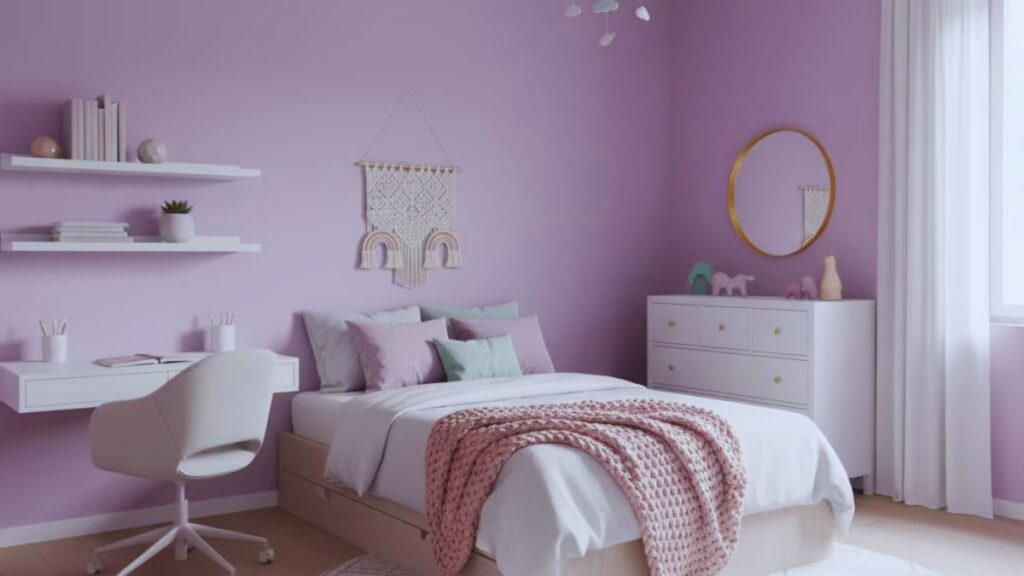
2. Playful Storage and Organization
Tidiness becomes effortless when the design encourages it. Use pastel-colored storage bins, open shelves, or wall organizers to turn organisation into a fun activity.
- Soft blush pink boxes or light teal baskets not only look cheerful but also teach kids the joy of keeping their room neat.
- When every toy has its own spot, children are more likely to take ownership of their space.
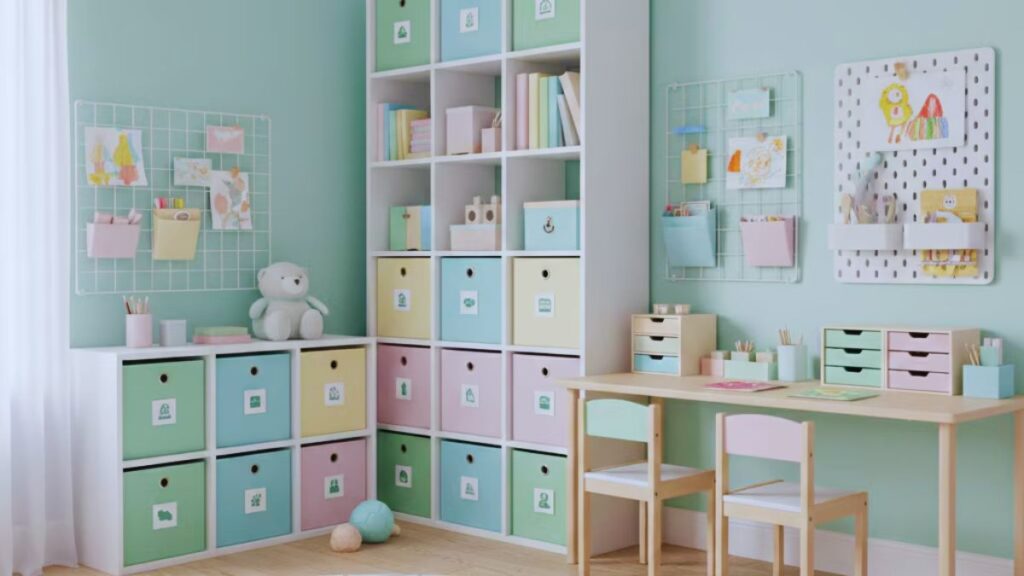
3. A Touch of Nature
Bring the outdoors in with biophilic design elements. Think muted green planters, botanical wall prints, or leafy patterns on curtains and rugs.
- Incorporating nature-inspired details helps kids feel more grounded and connected to their surroundings.
- Interior design studies have shown that exposure to natural elements indoors can boost cognitive performance and emotional stability — perfect for growing minds.
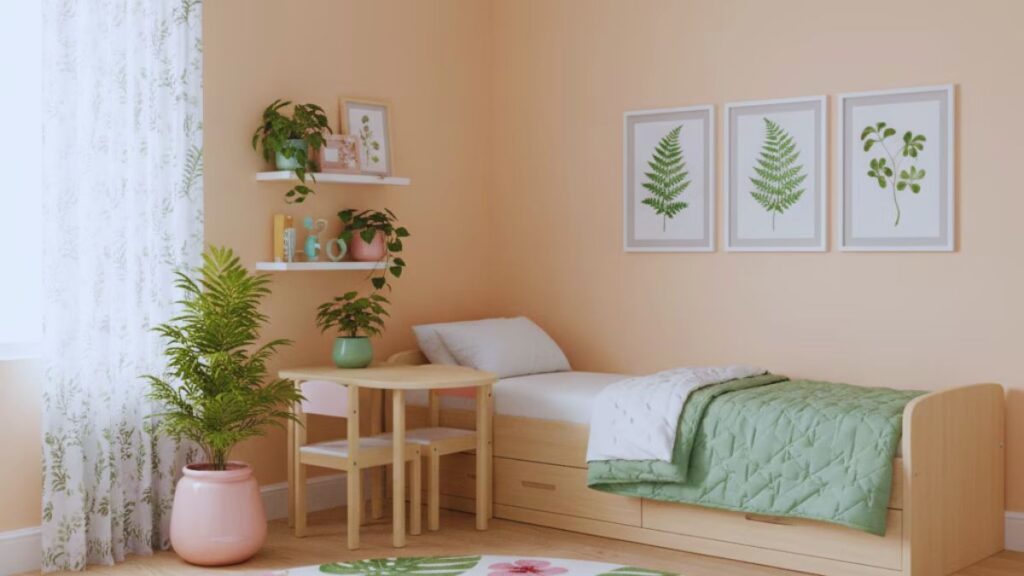
4. Thoughtful and Layered Lighting
Lighting can make or break the ambience of a room. Use sheer pastel curtains to let in diffused sunlight during the day.
- Complement natural light with warm LED lamps or fairy lights for cozy evenings.
- Layering your lighting — with a mix of ceiling, desk, and wall lights — ensures the room feels bright, comfortable, and welcoming at all times.
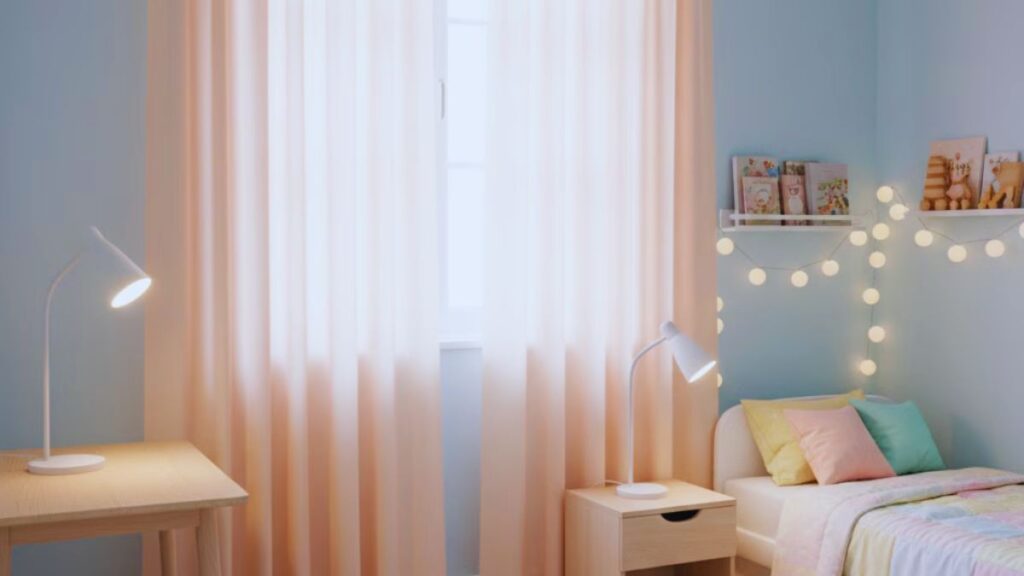
5. Create a Personalized Corner
Children love having a space that feels truly theirs. Design a small reading nook with pastel cushions, a beanbag, and a soft throw blanket.
- Add a pinboard or magnetic wall where they can proudly display their drawings, photos, and achievements.
- These personalised corners give them a sense of independence and creativity, helping them express who they are.
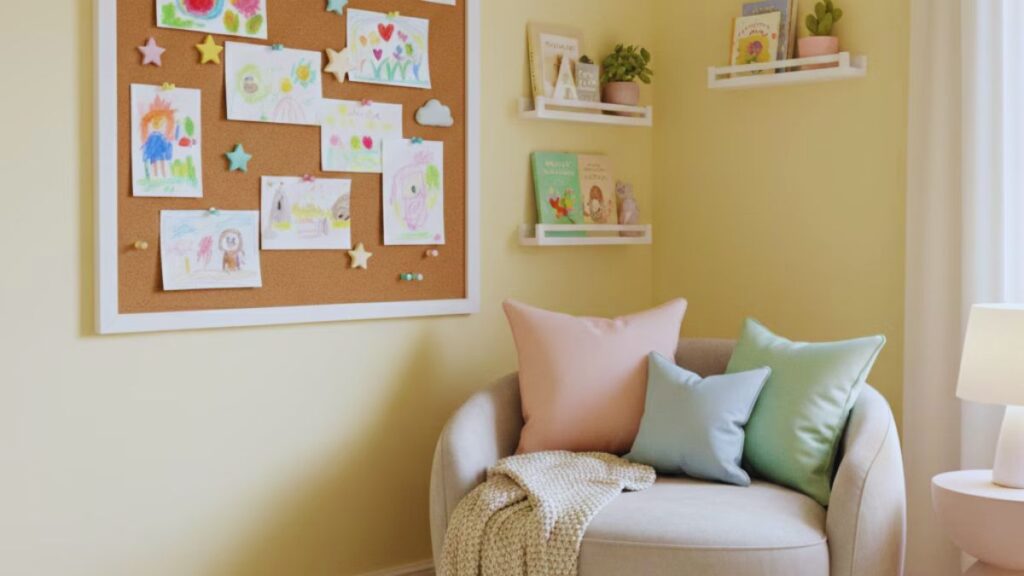
6. Keep It Balanced
While pastels are charming, overdoing them can make a room feel overly sweet. To keep things modern and fresh, balance pastel tones with neutral furniture in white, beige, or light wood.
- This combination maintains a clean, airy look while highlighting the gentle hues around it. A minimalist design approach lets the colours breathe, creating a timeless and versatile room that grows with your child.
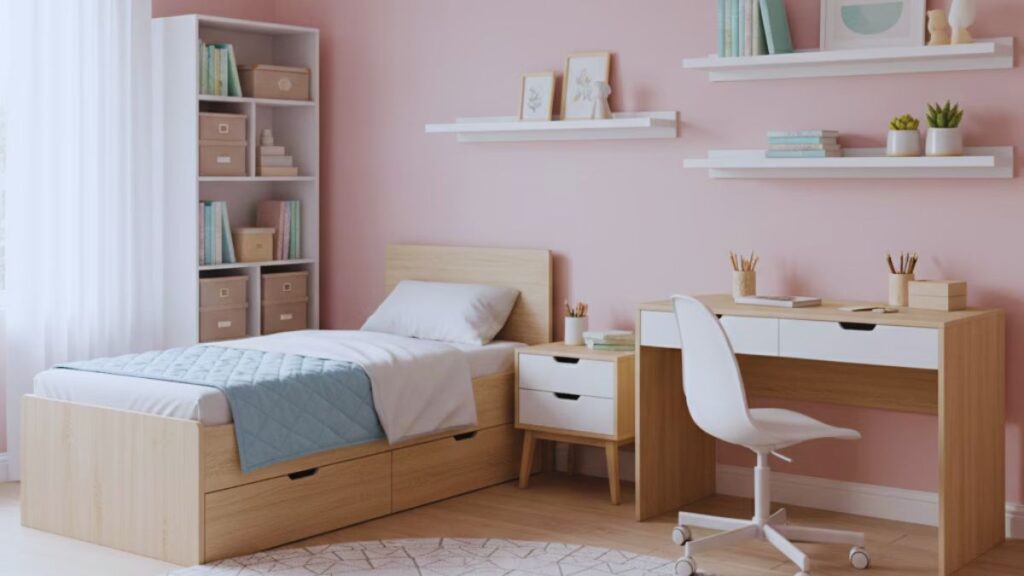
Final Thoughts
Designing your child’s room with pastels isn’t just a style choice — it’s a step towards building an environment that supports emotional wellness and creativity. Soft colours can calm the senses, improve concentration, and create harmony, making them ideal for growing children who need both stimulation and serenity.
By combining thoughtful colour choices with smart organisation, lighting, and personal touches, you’ll craft a space that feels peaceful, inspiring, and full of warmth — a place where your child can truly relax, recharge, and thrive.
These six easy tips will definitely help you redesign your child’s room beautifully.

